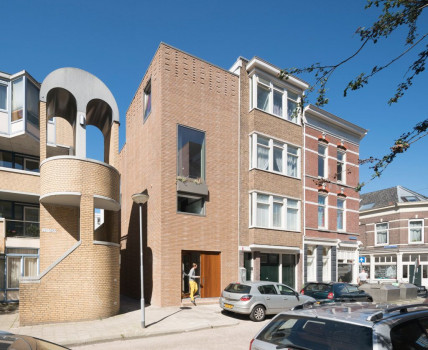How does architecture influence well-being?




- World Health Organization (2017)
Of course, there is no universal design to guarantee the quality of life of its residents. Numerous strategies and techniques have been used to design adaptable living environment according to the climate, lifestyle, available technology and demographic location. However, if the following key factors are considered and integrated into project designs, healthy living can be achieved.
Light: Doesn’t everyone prefer living under warm sunlight instead of fluorescent bulbs? Natural light is also known as “sunshine vitamin” which boosts the skin’s Vitamin D. It also reduces seasonal depression, improve sleep and reduce health risks from fluorescent lighting. Not only is it a free source of light, it is also energy efficient. Thus, it is important to keep in mind that the house should receive good amount of day light and the that the rooms have access to direct sunlight for a minimum of 2 - 4 hours per day. The house should also have high-head windows to provide enough daylight and an open sky view. In the bedrooms, there should be a balance of light and dark i.e. they should receive sunlight during the day but also have effective blackout options to avoid over-illumination.
.jpg)
Sound: It is very important to feel at peace after a long day at work. That can only happen if the house is free from the noise and traffic from the outside. Acoustic conditions should be created according to the location and needs of the residents. It is important to provide quiet spaces for sleeping and studying. It is also important to have natural ventilation, especially during the nights, to improve sleep. Washing machines, dishwashers and other sources of noise should be kept away from the rooms that are used for learning or relaxing. It is also important to consider how the noise inside the house can be minimized. Carpeted corridors can absorb the noise, soft furnishings and light furniture can create a calm environment for the residents.
Easy movement: Desk-bound lifestyle has caused quite a lot of damage to the physical health, especially during the Covid-19 lockdown. Therefore, it is essential to keep active. Something as small as moving up and down the stairs or walking from one room to another for a few minutes can be effective. This is why it is important to design a minimalist environment for the residents. Focusing on bare minimum furniture can create space to walk and exercise indoors. Avoiding dim-lit corridors and the use of art and natural light can act as an energy boost. The free-space can be very beneficial for wheelchair users or those with physical disabilities.
Colors and ceilings: The colors inside the house can impact the behavior and mood. Research suggests that the color red can enhance the ability to perform detail-oriented tasks and the color blue can enhance creativity. Therefore, it is important to keep the purpose of the room in mind when choosing the colors. Light colors make the room seem large and bright and dark colors can give large rooms a warm and intimate appearance.
.jpg)
We sometimes tend to neglect the color of the ceilings. Even though they only represent one-sixth of the space in a room, it is important to consider the choice of colors that are being used for the ceiling. White has been a preferred choice for decades, this is because light colors make the ceiling walls feel higher. Dark ceilings can evoke a feeling of coziness or for some but, it may trigger claustrophobia for some people. Hence, the ceilings should be of lighter color than the walls.
The height of the ceiling can also affect the ability to focus. Studies have shown that people are able to perform focused tasks, such as reading or studying, better with low-ceiling space. Hence, it is important to understand the mood of the room before the designing and coloring of the ceiling.
Neighborhood and location: The location of the house and its neighborhood has a great impact on the health and well-being. A house located in a poorly lit alley, surrounded by abandoned shops, would constantly instigate a feeling of unsafety. Similarly, if the house is located on a busy street connecting to the flyover, continuous traffic will act as a big disruption in the life of the residents. It is thus important to construct a house that is surrounded by public open space, reduced traffic and is accessible to public transport. In such a neighborhood, it gets easy for the residents to stay active, socialize and feel safe.
People spend 80 per cent of their time indoors. That is why it is essential to pay attention to the details that are impacting them physiologically and psychologically. Human experience should be prioritized when designing houses and buildings. It can improve productivity, learning, behavior and the quality of physical and mental health.




 Indonesia
Indonesia
 Australia
Australia
 New Zealand
New Zealand
 Hongkong
Hongkong
 Singapore
Singapore
 Malaysia
Malaysia







